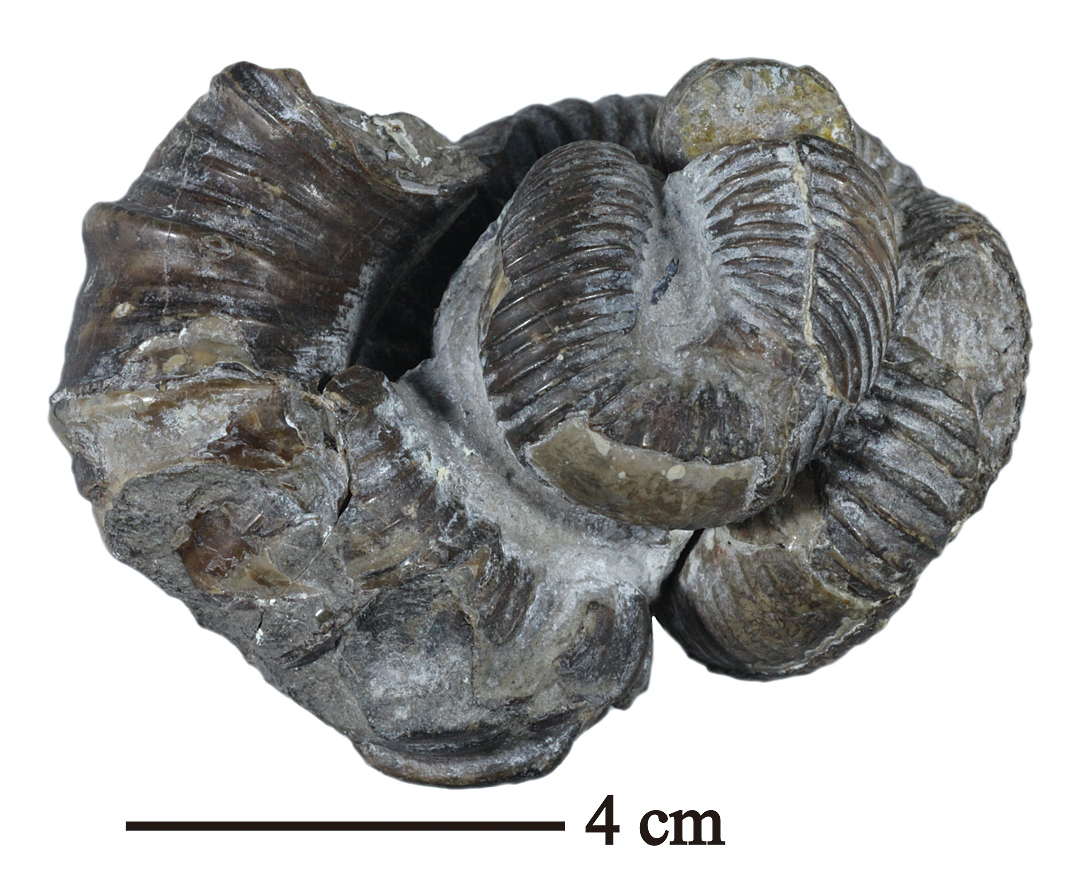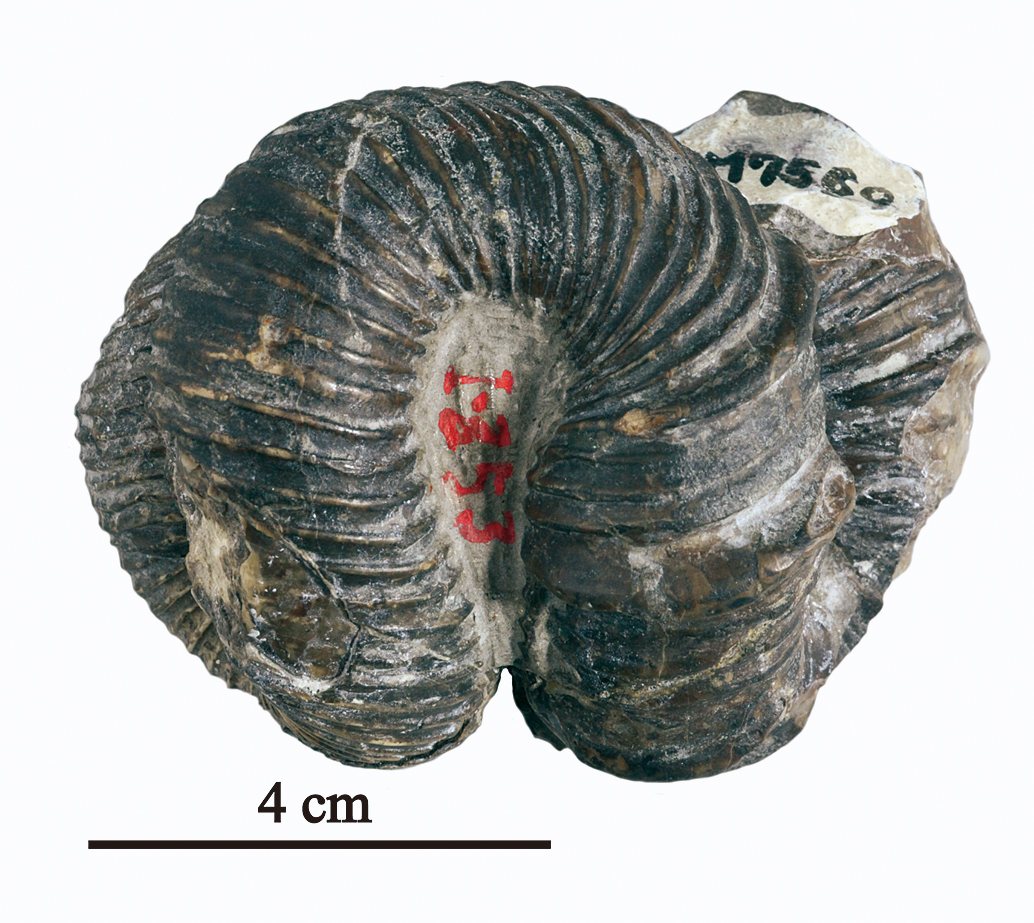B12
Nipponites
the rarest species of heteromorph ammonite
Nippiness is probably the most famous ammonites in the world for three reasons: (1) its shell morphology is exceptional and deviated remarkable from normal planispiral forms of ammonites, (2) abundance of specimens is incredibly low, especially for complete specimens with fragile shell morphology, (3) the species was highlighted in the 1980s as a material for theoretical morphology. When the species was described in 1904, there was a doubt of abnormalitiy. Theoretical modelling by Dr. Takashi Okamoto in the 1980s elegantly revealed that Nipponites can be derived from an ancestral helicoidal form by a slight change in growth parameters, (2) a winding mode of growth is possibly controlled for stabilization of posture, and (3) sudden morphological evolution can be achieved by simple modification of genetic growth program. (Takenori Sasaki)
References
Okamoto, T. (1988) Developmental regulation and morphological saltation in the heteromorph ammonite Nipponites. Paleobiology 14: 272–286.
Okamoto, T. (1989) Comparative morphology of Nipponites and Eubostrychoceras (Cretaceous nostoceratids). Transactions and Proceedings of the Palaeontological Society of Japan. New Series, no. 154: 117–139.
Yabe, H. (1904) Cretaceous Cephalopoda from the Hokkaido. Part 2. Turrilites, Helicoceras, Heteroceras, Nipponites, Olcostephanus, Desmoceras, Hauericeras, and an undetermined genus. Journal of the College of Science, Imperial University of Tokyo 20: 1–45, pls. 1–6.


